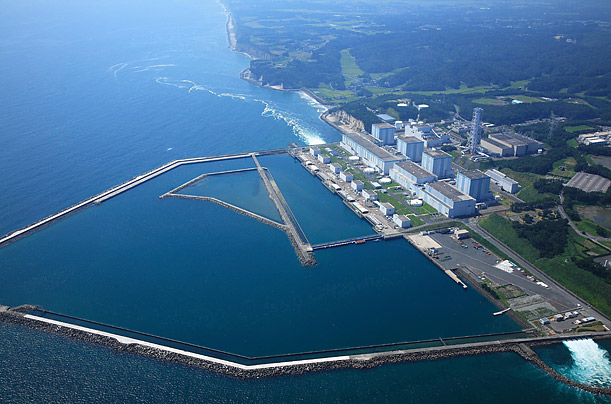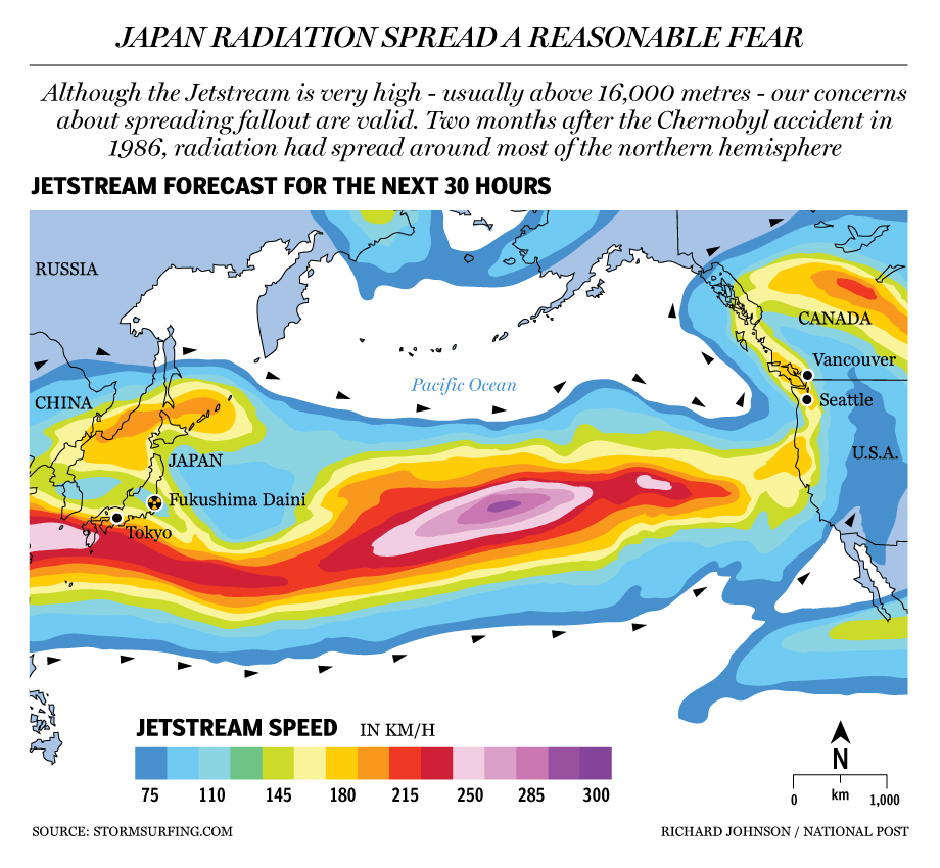RADIATION RISES AND MAY BE OUT OF CONTROL
Workers were ordered to withdraw briefly from a stricken Japanese nuclear power plant on Wednesday after radiation levels surged, Kyodo news reported, a development that suggested the crisis was spiraling out of control.
Just hours earlier another fire broke out at the earthquake-crippled plant, which has sent low levels of radiation wafting into Tokyo in the past 24 hours, triggering both fear in the capital and international alarm.
France urged its nationals either to leave Japan or head to the south and asked Air France to provide planes for evacuation. In a statement, the French embassy in Tokyo said two planes were already on their way to the capital, according to Reuters.
Academics and nuclear experts said the solutions being proposed to quell radiation leaks at the Daiichi nuclear plant in Fukushima were last-ditch efforts to stem what could well be remembered as one of the world’s worst industrial disasters.
“This is a slow-moving nightmare,” said Dr Thomas Neff, a research affiliate at the Center for International Studies, which is part of the Massachusetts Institute of Technology.
Workers were trying to build a road so fire trucks could reach the stricken reactor No. 4 which was on fire on Wednesday.
Public broadcaster NHK said flames were no longer visible at the building housing the reactor, but TV pictures showed smoke or steam rising from the facility around 0100 GMT.
Japanese officials said they were talking to the U.S. military about possible help at the plant, 240 km (150 miles) north of Tokyo.
Water canon
Japan has asked the National Police Agency to send a water cannon to the Fukushima nuclear plant to help pour water into a containment pool holding spent fuel rods, NHK said Wednesday.
Workers at the plant, run by Tokyo Electric Power Co, have struggled to top up water levels as the rods have heated up the water, threatening to evaporate it and expose the rods to air, which would send out radioactive material.
The water cannon truck, held by Tokyo’s Metropolitan Police Department, may start operations on Wednesday night, Kyodo News reported.
A Japanese military helicopter was deployed earlier Wednesday on a mission to dump water from a huge bucket onto the fuel rods, but returned due to a high level of radiation above the reactors and containment pool before night fell.
Radiation levels too high

Concern had earlier been mounting that the skeleton crews dealing with the crisis might not be big enough, or were possibly exhausted after working for days since last Friday’s massive earthquake damaged the facility. Authorities withdrew 750 workers on Tuesday, leaving only 50.
All those remaining were pulled out for almost an hour because radiation levels were too high, but later allowed to return, officials said.
The plight of hundreds of thousands left homeless by the quake and devastating tsunami that followed worsened overnight following a cold snap that brought snow to some of the worst-affected areas.
While the official death toll stands at around 4,000, more than 7,000 are listed as missing and the figure is expected to rise.
In the first hint of international frustration at the pace of updates from Japan, Yukiya Amano, director general of the International Atomic Energy Agency, said he wanted more timely and detailed information.
“We do not have all the details of the information so what we can do is limited,” Amano told a news conference in Vienna. “I am trying to further improve the communication.”
Several experts said the Japanese authorities were underplaying the severity of the incident, particularly on a scale called INES used to rank nuclear incidents. The Japanese have so far rated the accident a four on a one-to-seven scale, but that rating was issued on Saturday and since then the situation has worsened dramatically.
France’s nuclear safety authority ASN said on Tuesday it should be classed as a level-six incident.
Japanese Prime Minister Naoto Kan on Tuesday urged people within 30 km (18 miles) of the facility — a population of 140,000 — to remain indoors, as authorities grappled with the world’s most serious nuclear accident since the Chernobyl disaster in Ukraine in 1986.
Officials in Tokyo said radiation in the capital was 10 times normal at one point but not a threat to human health in the sprawling high-tech city of 13 million people.
Staying indoors

Levels dropped to minimal on Wednesday, but nerves were shaken by a 6.0 earthquake which shook buildings. No tsunami warning was immediately issued but the agency warned of a possible change in sea levels.
But residents have nevertheless reacted to the crisis by staying indoors. Public transport and the streets are as deserted as they would be on a public holiday, and many shops and offices are closed.
Winds over the plant will blow from the north along the Pacific coast early on Wednesday and then from the northwest towards the ocean during the day, the Japan Meteorological Agency said.
Fears of trans-Pacific nuclear fallout sent consumers scrambling for radiation antidotes in the U.S. Pacific Northwest and Canada.
Authorities warned that people would expose themselves to other medical problems by needlessly taking potassium iodide in the hope of protection from cancer.
The nuclear crisis and concerns about the economic impact from the quake and tsunami have hammered Japan’s stock market.
The Nikkei index was up nearly 4 percent after closing down 10.6 percent on Tuesday and 6.2 percent the day before. The fall wiped some $620 billion off the market.
Authorities have spent days desperately trying to prevent the water which is designed to cool the radioactive cores of the reactors from evaporating, which would lead to overheating and the release of dangerous radioactive material into the atmosphere.
Levels of 400 millisieverts per hour had been recorded near the No. 4 reactor, the government said. Exposure to over 100 millisieverts a year is a level which can lead to cancer, according to the World Nuclear Association.
Travel warnings

Several embassies advised staff and citizens to leave affected areas in Japan. Tourists cut short vacations and multinational companies either urged staff to leave or said they were considering plans to move outside Tokyo.
Nuclear radiation is an especially sensitive issue for Japanese following the country’s worst human catastrophe — the U.S. atomic bombs dropped on Hiroshima and Nagasaki in 1945.
There have been a total of four explosions at the plant since it was damaged in Friday’s massive quake and tsunami. The most recent were blasts at reactors Nos. 2 and 4.
Concern now centers on damage to a part of the No.4 reactor building where spent rods were being stored in pools of water outside the containment area, and also to part of the No.2 reactor that helps to cool and trap the majority of cesium, iodine and strontium in its water.
“What we most fear is a radiation leak from the nuclear plant,” Kaoru Hashimoto, 36, a housewife living in Fukushima city, 80 kilometres northwest of the power plant, told AFP by phone.
“Many children are sick in this cold weather, but pharmacies are closed. Emergency relief goods have not reached evacuation centres in the city,” she said.
“Everyone is anxious and wants to get out of town, but there is no more petrol.”
The full extent of the destruction from Friday’s earthquake and tsunami was becoming clear as rescuers combed through the region north of Tokyo where officials say at least 10,000 people were killed.

